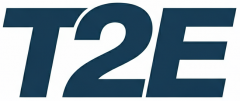With the rapid advancement of technology, Network Operations Centers (NOCs) have gained prominence, and their importance has grown exponentially. Nowadays, businesses heavily depend on technology infrastructure for seamless operations, making NOCs vital for business continuity. Even a small system disruption can incur substantial losses. Automating NOC tasks is crucial for enhanced effectiveness and efficiency. Tech execs must stay updated.
So, let’s explore the benefits of automating your NOC and how this approach can transform your business operations.
We will also take a look at various tools and strategies that you can employ to streamline and automate your NOC operations.
- Benefits of automation: It eliminates human errors in your NOC, reducing downtime. It maximizes efficiency and provides greater visibility into network and system monitoring. So, critical issues are resolved promptly. Automation also frees up time for IT staff to focus on more complex tasks and projects, increasing productivity.
- Identifying tasks for automation: After understanding the advantages automation brings, the next step is to pinpoint tasks that can be automated. Accurate identification of tasks with high benefits, resource requirements, and easy automatability is crucial. Some examples include log analysis, monitoring conditions, alerts, and issue diagnosis.
- Utilizing Monitoring and Automation tools. Implementing these tools simplifies NOC automation, streamlining processes. There are numerous commercial and open-source options that offer extensive functionality and flexibility. These tools monitor servers, network devices, applications, and user experiences. So, automate repetitive processes to avoid errors and minimize downtime.
- Strategize to optimize and streamline: Automating tasks requires effort, so plan and simplify your approach. Identify priority tasks and choose between workflows or scripts. Use existing software frameworks or integrated tools. Continuously improve efficiency for up-to-date, consistent results. By automating repetitive and time-consuming tasks, companies can save valuable time and resources, allowing them to focus on more important aspects of their operations.
- Don’t overlook human supervision: While we may think automation eliminates the need for human intervention, there are situations where it is crucial. Automated NOC processes have their limits, so having knowledgeable staff monitoring and reacting promptly is vital.
In conclusion, network operations center automation boosts tech executives’ efficiency and speeds up responses to potential downtime.
Optimizing and streamlining tasks through automation tools minimizes human supervision to essential duties. Embracing NOC automation gives organizations a competitive edge, ensuring business continuity and scalability. This approach empowers businesses to keep up with technological advancements.
Click here for a post on what you should know about environmental impacts of moving to cloud providers.



